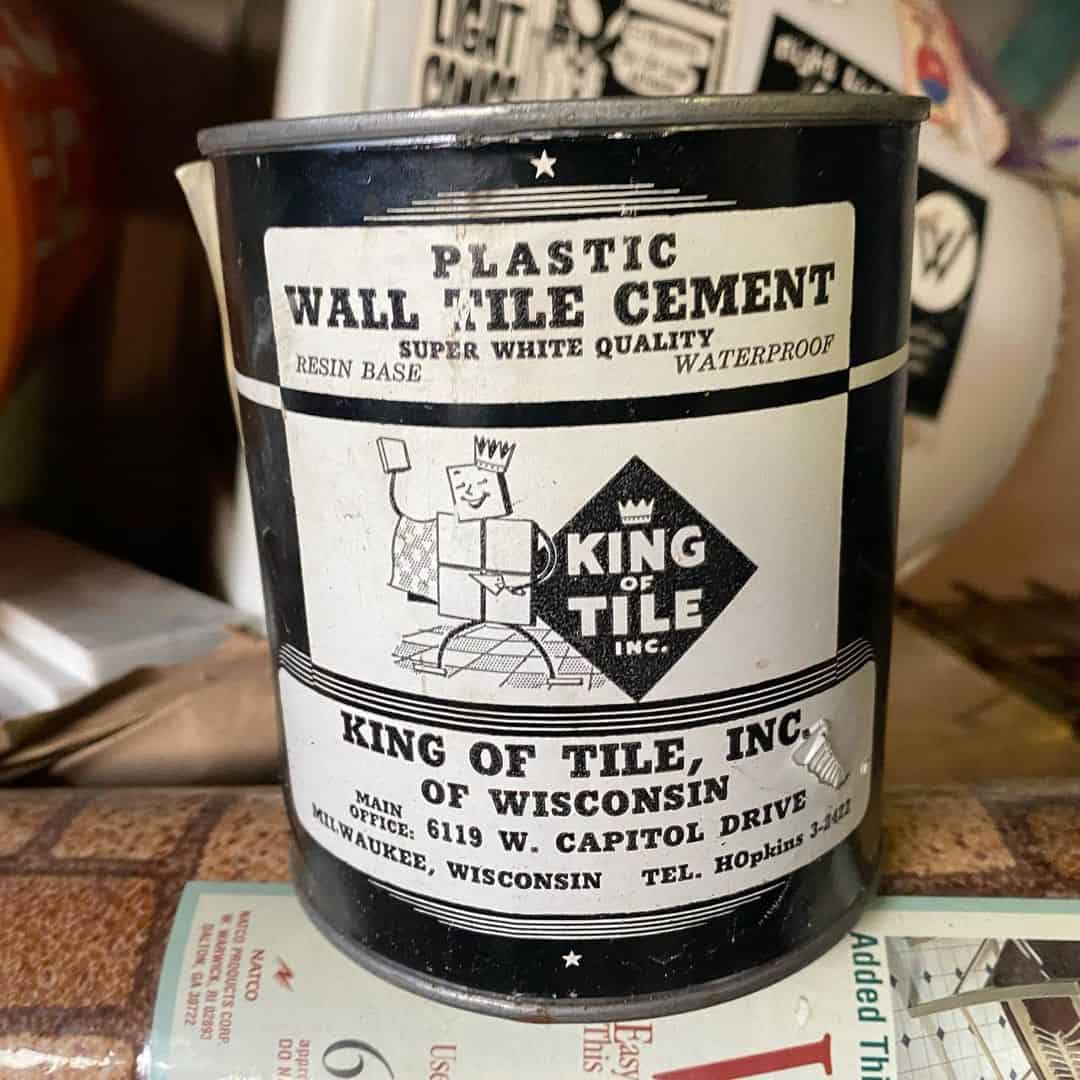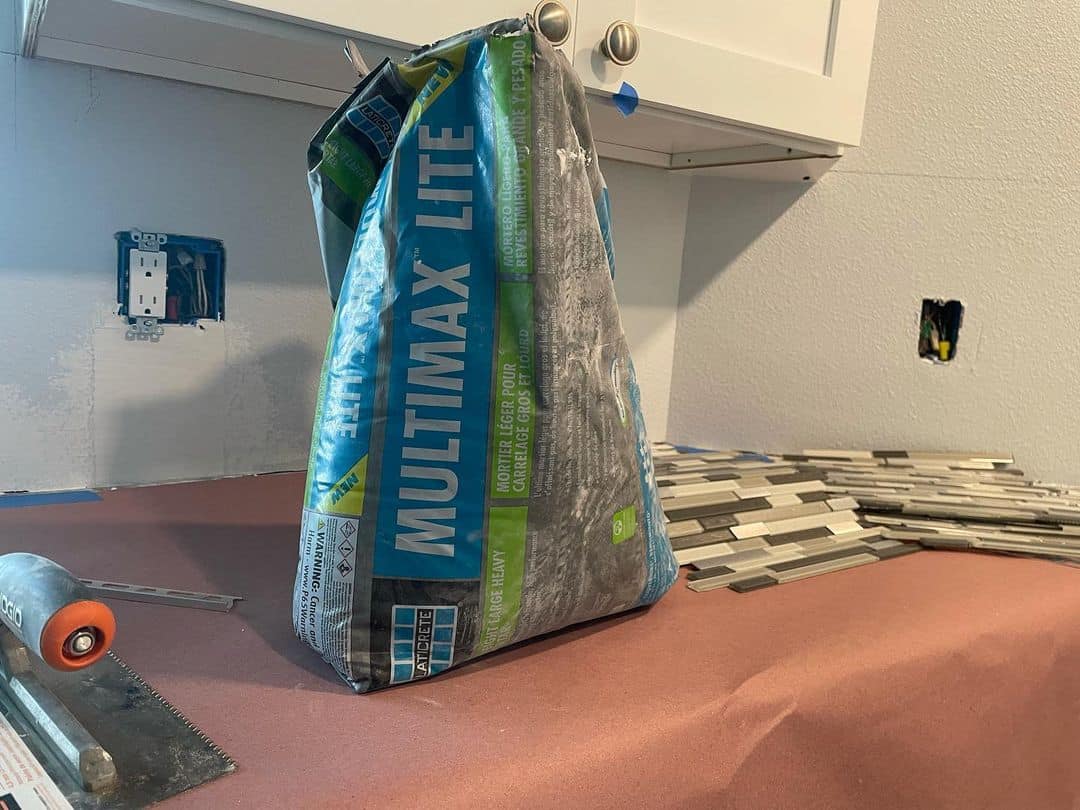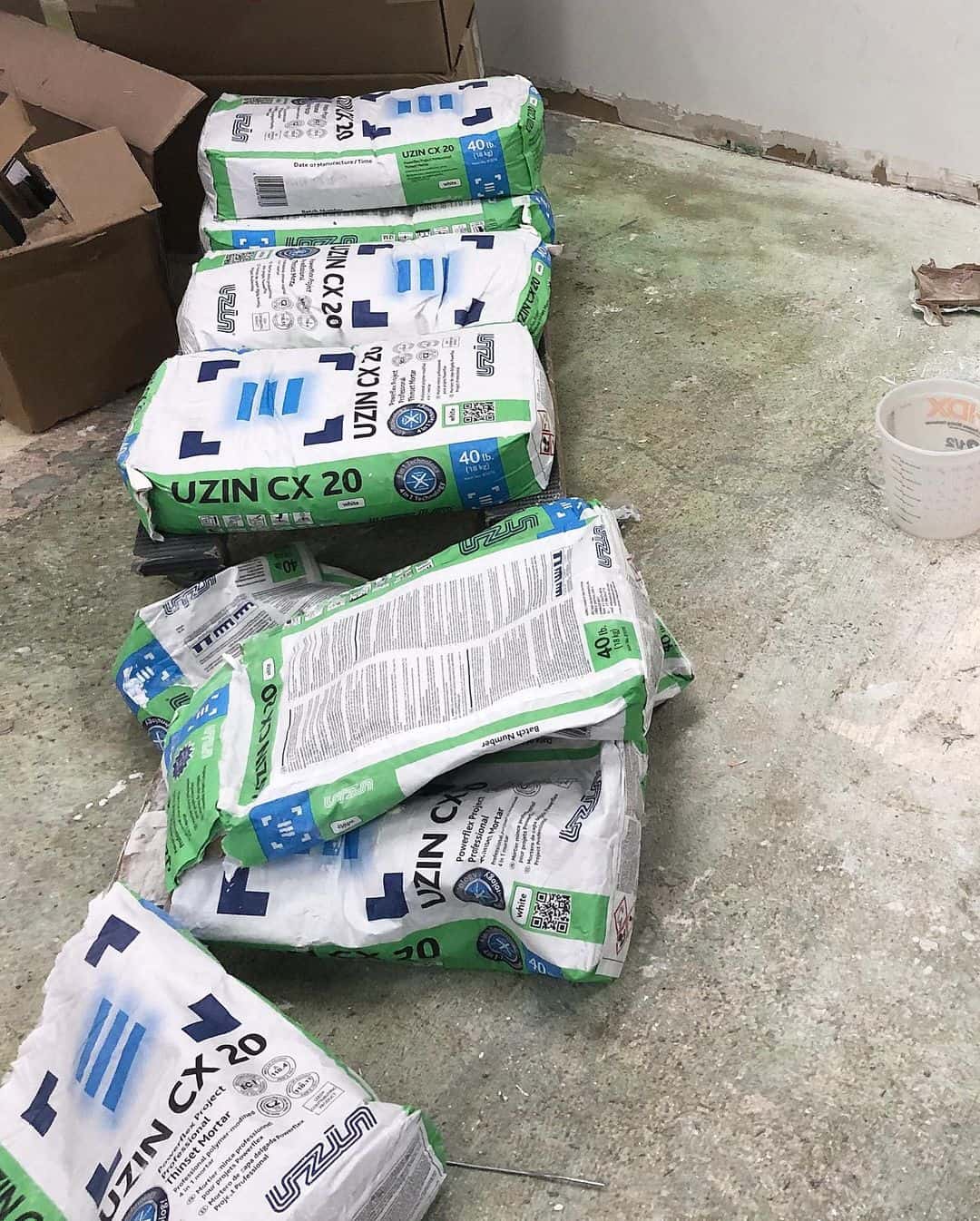Are you planning an indoor or outdoor DIY project that involves tile installation? If the answer is yes, then you might face the dilemma of which adhesive to use, and the choice usually boils down to the two most popular: mastic or thin-set mortar.
Which of these two tile adhesives is the better option primarily depends on the purpose of the tiled surface, the substrate they are placed on, the type and size of the tiles, and exposure to moisture or atmospheric changes in the case of outdoor surfaces.
Therefore, to help you solve this dilemma, let’s consider these two adhesives’ specifications, advantages, and disadvantages.
Mastic vs. Thinset: What’s The Difference
What is Mastic?

Mastic is a quick-grab, acrylic glue-like adhesive with low VOC content, which can be used in interior and exterior works.
In the past, mastic was an organic material made from natural resins from the Pistacia Lentiscus or mastic tree. Today, however, this term is a generally accepted name for all synthetically produced fast-adhering adhesives for tiles that do not contain cement, sand, and latex, which is the standard composition of thinset mortar.
It is often obtained as a ready-made emulsion that you need to stir before use. Another version is a dry powder mixed that you need to mix with water in the ratio specified in the manufacturer’s instructions on the package.
It is quickly and easily applied with a trowel or roller, enabling stable contact between the tile and substrate with quick drying.
This latex adhesive releases an intense, pungent odor that lingers in the air for quite a long time, and when dry, it has a white or light gray color.
1. Where Can Mastic Be Used?
Mastic is a good choice for kitchen walls, backsplashes, wainscots, bathroom backsplashes, or bathroom walls.
Although it can bond natural stone, quarry, mosaic tile, and glass tile, it shows the best results with ceramic and porcelain tiles with maximum dimensions of 13×13 inches.
2. Where Can Mastic Not Be Used?
Mastic does not show significant water resistance and is unsuitable for wet areas or surfaces submerged in water. Therefore, please do not use it around water features, tiling walls, or floors in steam or shower rooms and swimming pools.
Although it is not a rule, it is better to avoid mastic in the area of higher-traffic floors.
3. What Are the Advantages of Mastic?
- the glue dries quickly and adheres well; it enables quick settings, so the sliding of tiles during vertical applications on walls is reduced to a minimum
- if you do not use the entire amount of mastic in the package, you can put the lid to save it and apply it later.
- In case you want to remove the tiles, that job is easier if they are glued with tile mastic
- It can be used for both wall and floor installations
4. What Are the Disadvantages of Mastic?
- Mastic can be used on drywall or damp areas, but it is unsuitable for constantly wet surfaces or submerged water, such as swimming pools or shower walls.
- Mastic is not fully water-resistant
- as an adhesive for floor tiles, it is applicable only in residential areas
- tile contractors avoid the use of mastic when working with large tiles since rapid drying makes grout joints corrections more difficult
- poorly aligned tiles are more difficult to fix
- It is not the best choice for high-traffic floors
5. How To Apply Mastic Adhesive?
Mastic is an easily spreadable mass that you can apply effortlessly with a roller or spatula. The back of the tile on which you use the adhesive should be dry and clean, without dust, grease stains, or other dirt.
Apply the mass evenly, covering the entire back of the tile in an even layer not thinner than 0.03 inches (3 mm).
If you used the dry version mixed with water, you should use the prepared amount within the next two hours. Since the mass begins to thicken during this time, it is possible that you will need to add a little water and mix again.
What is Thinset?

Thinset is an inorganic material similar to mortar but without lime. It is usually obtained as a premixed or dry powdery mixture that should be blended with water to make a dense paste.
Thinset appears on the market in modified and unmodified versions. An unmodified thinset is made of Portland cement and sand mixed with water-retaining agents that improve strength and water resistance.
The modified version has the same components but is enriched with liquid or acrylic polymers that enhance stability.
Apart from the fact that it resembles cement and concrete in appearance and color, it has another feature in common – relatively long hardening or drying.
1. Thinset Slow Drying – Advantage or Disadvantage?
Due to its composition, this glue dries more slowly than mastic, but this can be both an advantage and a disadvantage. For example, when working with vertical or overhead surfaces, relatively slow drying slows down the process of laying tiles! And increases the possibility of tile sag!
Although it is generally a stronger, more water-resistant, and firmer material than mastic, it is not nearly as sticky, so it cannot carry the weight of tiles without support until it develops full strength.
Working with thinset is, therefore, often a time-consuming process. In addition, the extended drying time leaves a greater possibility of tile sag. Yet, the problem is easily solved by using plastic tile separators that allow precise positioning and fixing of each tile.
And while the extended drying time needed for full adhesion is a disadvantage on vertical surfaces, it can even be an advantage in other situations. If you notice misaligned tiles while installing, for example, a shower floor, you would have enough time to correct them before the thinset hardens completely.
2. Where Can Thinset Be Used?
Although the slow drying of thinset is debatable, professionals still prefer this type of adhesive because it is more resistant, more durable, and can be applied on different substrates and more diverse internal and external surfaces.
Some are concrete, drywall, brick, cinder block, plaster, or wood.
3. Where Can Thinset Not Be Used?

Although it looks like a reliable adhesive that you can use on almost any type of substrate, you cannot use thinset on metal, glass, and plastic, because it has poor or no binding to that type of substrate.
4. How to Apply Thinset Mortar?
Unlike mastic glue, which is applied to the back of the tile, thinset tile glue is applied to the surface on which the tiles are laid. This means that before using thinset, the surface should be thoroughly prepared by removing unevenness, debris, protrusions, and dirt.
When the surface is prepared, and in the case of floor works and thoroughly leveled, an even layer is applied to it using a notched trowel.
If you bought thinset powder, mix it with water in the ratio indicated on the package. In the case of the premixed version, stir the mixture without adding water before applying.
The tiles are then arranged on the coated surface. Gently press each tile with your hand or a wooden hammer to achieve complete contact and squeeze the air out of the grooves made by the notch trowel.
5. Thinset Advantages:
- It can be used for dry but also for very wet areas inside and outside
- it is a much stronger material than mastic, so it is a better choice for horizontal surfaces exposed to greater loads.
- the material is cheaper, especially in the dry-mix variant
- it is easy to use, and due to slower drying, it leaves enough time for corrective work
- it is a better choice for laying large tiles
- When dry, the thinset does not have much flexibility, which is especially important for floor tiles. Stepping on tiles not evenly connected to the substrate causes them to break or separate.
6. Thinset Disadvantages:
- it dries longer, which increases the possibility of sliding or dropping during the curing process
- the unused mass must be thrown away
- removing tiles glued with thinset is a time-consuming job that requires much work
Conclusion
When it comes to the mastic vs. thinset debate, it is necessary to emphasize that both materials have their good and bad sides. The fact is that most professional constructors prefer thinset because it is more versatile in its application, and there are no restrictions when it is exposed to moisture and water in question. However, work with thinset glue is slower, especially with a vertical substrate.
On the other hand, mastic is excellent for vertical work because it dries quickly, and the whole process generally takes less time as long as you are not working on surfaces that are not exposed to constant moisture.
Without favoritism, we tried to show you all the positive and negative sides of both adhesives, so it is up to you to decide which one is more acceptable for the work you are planning! Hoping we have solved your dilemma, we invite you to contact us and share your experience with us!